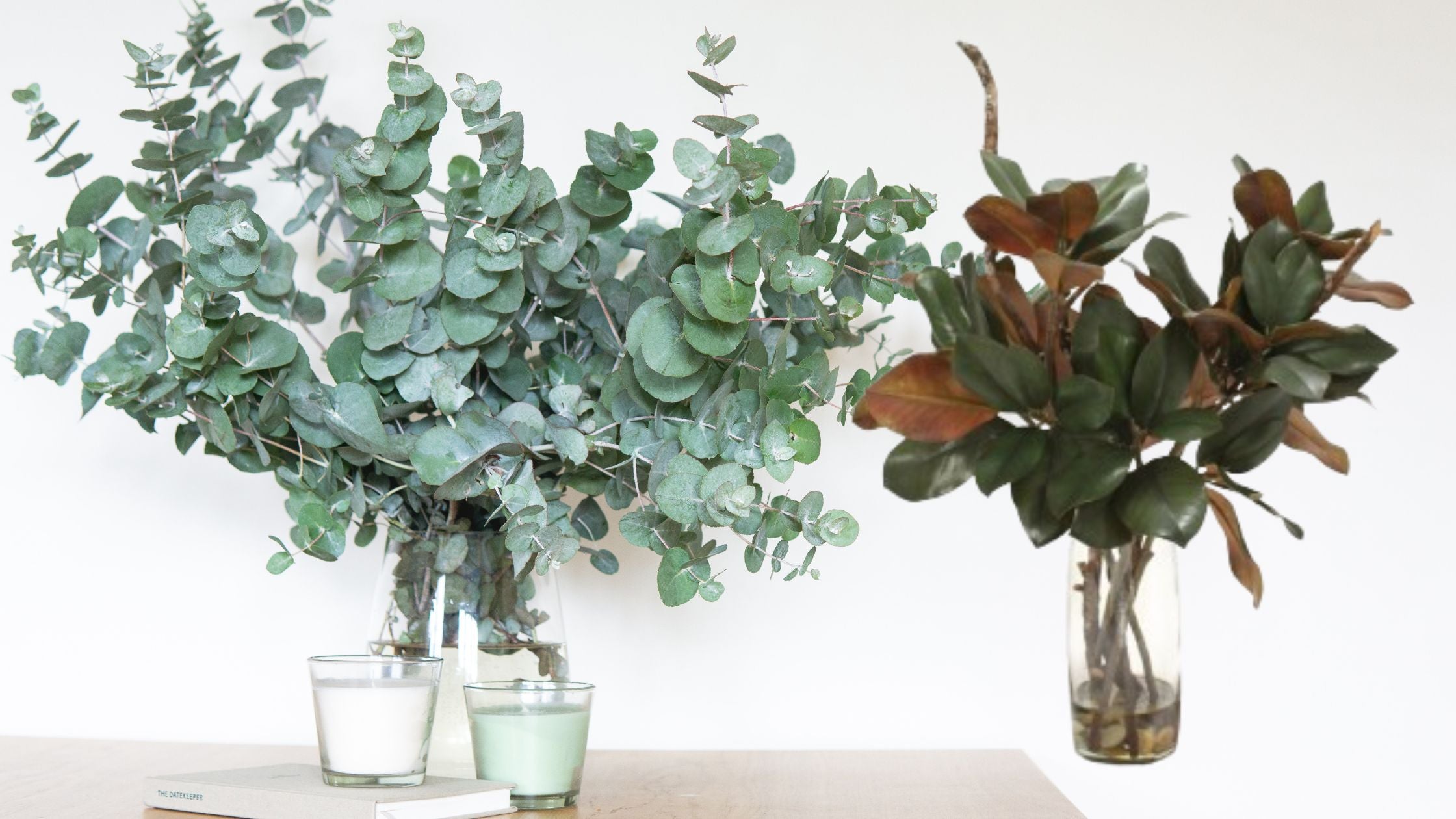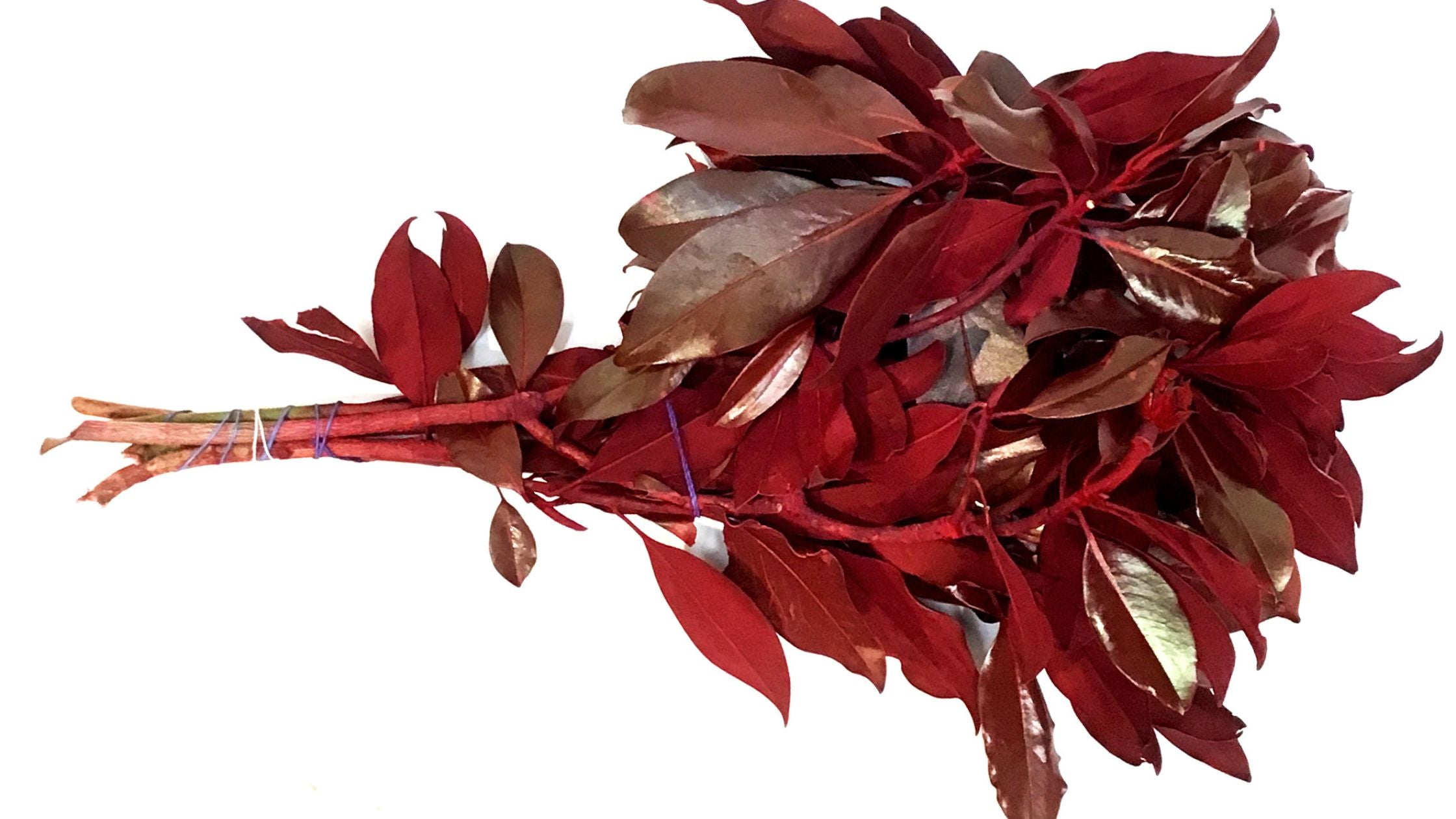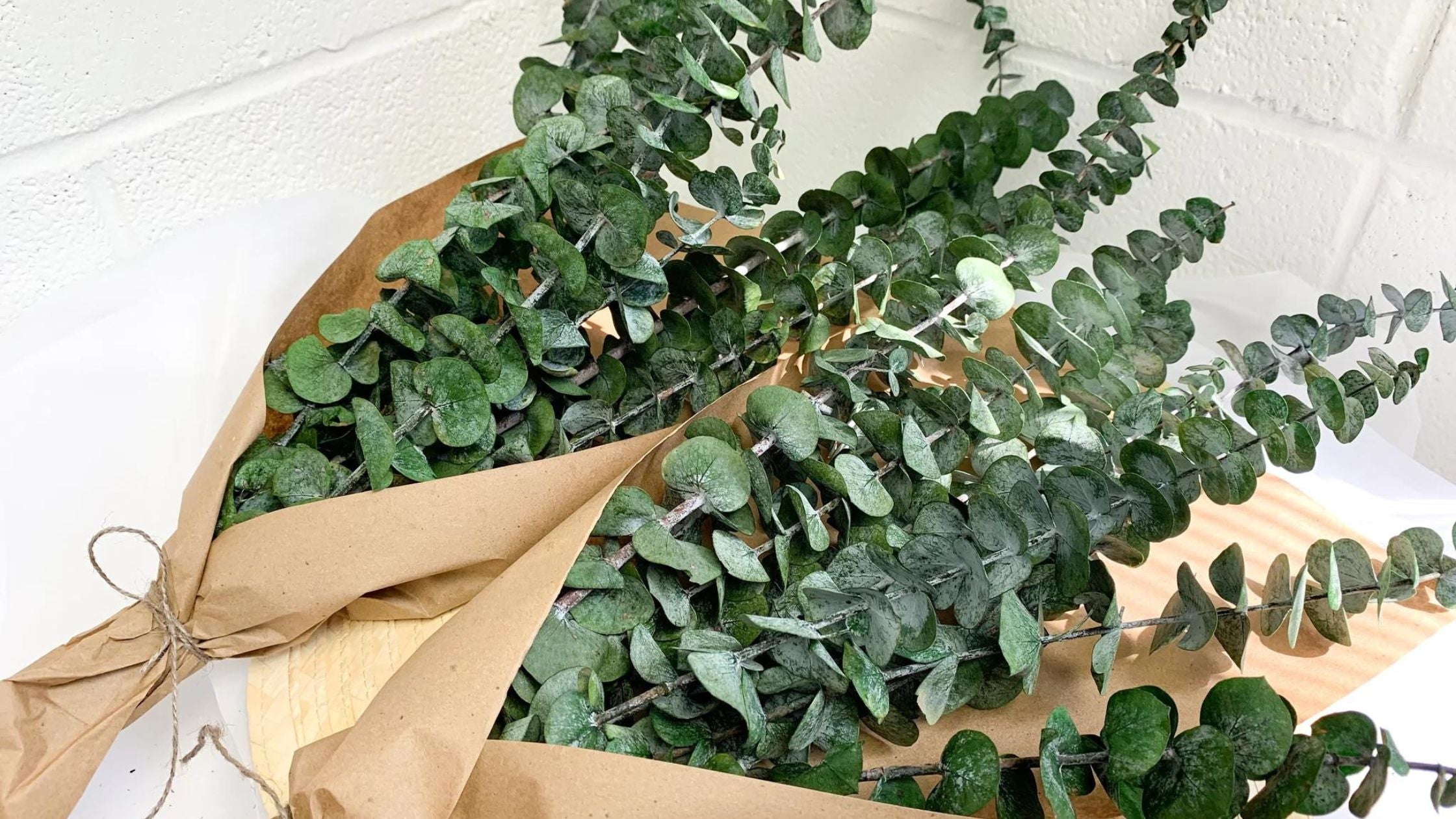PRESERVING CHRISTMAS GREENERY – MAGNOLIA AND EUCALYPTUS

It’s time to fill your house with the wonderful scents and sounds of Christmas! Scents of nature are especially appealing so add some eucalyptus and magnolia to your decorating list. Magnolia brings visual and textural excitement to your decorations while eucalyptus does all that and smells wonderful too. The scent of Eucalyptus can be quite strong and comes from the oil in each leaf. It is described as a refreshing and invigorating cool mint with notes of honey. There are many species of Eucalyptus available during the Christmas season; seeded, branches with wispy long leaves, some with spiral leaf attachments and those with small, medium or large leaves. You can use these branches fresh or preserve them so they last well past the Christmas season. Be aware that the glycerin preservation process can take some time so buy magnolia and eucalyptus early.
But First! -A Word About Using Fresh Bunches
Eucalyptus and magnolia branches are sold in bunches and need conditioning (hydrating) before using fresh in table centres, arrangements and wreaths. Prior to your purchase, make sure you have a couple of large vases filled with room temperature water at the ready back home.

When you get home, untie the bunches, diagonally trim the bottom inch off the stems and strip or prune off the leaves that will be under the water in your vase. Lightly mash the ends of each branch with a hammer for improved water uptake. Immerse the bare ends in the water. Leave them to soak for 1-2 days before using in fresh arrangements. Sometimes the eucalyptus water can become light brown. This is normal.
If you have indoor live arrangements, I urge you to keep some eucalyptus and magnolia aside in a separate vase for touch-ups if needed. When changing the water, wash the vase with soap and water, rinse thoroughly and then refill with water. Fresh eucalyptus in a vase lasts about 3 weeks or more with proper care. Change out the water once or twice a week.
Three Ways to Preserve Eucalyptus and Magnolia Branches
Drying
Eucalyptus branches will dry on their own after three weeks to a lovely sage green color; even in a vase of water. To slow down this process, fresh cut the stems, mash the ends and change out the water once a week.
If you are wanting to dry the branches as soon as you get home, the best method is to hang each bunch upside down in a cool, dark and dry room. This method can take 2-3 weeks. Once dried, the leaves will be somewhat discolored. Dried eucalyptus branches are fragile, so handle with care.
Magnolia branches can also be hung upside down to dry or individual leaves can be laid down flat on a wire drying rack. When dry, they will turn brown and be on the crispy side.

Glycerination
Magnolia and eucalyptus (along with boxwood and cedar branches) are best preserved with glycerin to retain some of their color and flexibility. This method is called glycerination.
Glycerin is a colorless, water-soluble, gelatinous compound that is created from animal and botanical sources.
The water in each leaf is replaced by the glycerin mixture. The preserved branches or leaves remain soft and pliable and will last months if not years.
Glycerin is non-toxic and safe for humans and pets. Always follow label directions.
Basic Glycerin Preservation Recipe
Use vegetable or technical grade glycerin. Mix 2 cups of hot water (57 degrees C) and 1 cup glycerin. Stir for 1 minute. The mixture will be clear.
Any unused mixture can be stored in an airtight glass jar and lasts a long time. Store the jar out of the sun in a cool, dark place.
Preserving Magnolia and Eucalyptus Branches with Glycerin
(This method also works for Cedar and Boxwood boughs)
Vase Method
Make a fresh 45 degree cut at the base of each branch and mash the ends with a hammer. Immediately immerse in the glycerin water. The branches will be preserved after 2-6 weeks in the glycerin water. Change out the glycerin water once a week. Magnolia branches will be preserved when the leaves turn golden brown.
Large Shallow Pan Method
Individual magnolia leaves and small eucalyptus twigs –Cut the ends of the eucalyptus twigs and the magnolia leaf stems at a 45 degree angle, crush the ends with a hammer then submerge in a large shallow pan of glycerin water. The crushing of the stems increases the absorption of the water. Try not to let the leaves touch each other but this is almost impossible. You can place them in layers with the second layer being perpendicular to the bottom layer. Use a tray or plate to weigh down the leaves and keep them submerged at all times. Soak for 2-6 days. Check daily for progress. New leaves absorb the glycerin water mix more readily than older leaves. Keep the pan in a cool, dry place out of direct sun. When well preserved the magnolia leaves will turn golden brown. Once preserved, rinse the leaves off with warm water and dry. The eucalyptus will darken slightly as it is preserved.
After Christmas you can store the preserved magnolia and eucalyptus leaves between sheets of wax paper or tissue in a dark, dry space.

Mod Podge
Yes, Mod Podge! This preservation method involves a bit of work but the end result is worth it. This method also allows magnolia leaves to keep their dark green shiny appearance!
Magnolia - If you are decorating with individual magnolia leaves, clean each leaf separately with a damp cloth and dry well. Apply Mod Podge Satin (Clear) to the front of each leaf with a foam brush. Let dry. Apply a layer of mod podge to the back. Lay the leaves on a piece of wax paper and let them dry overnight.
The next morning spray each leaf, front and back, with two coats of Mod Podge Clear Acrylic Sealer. Let them dry between coats and they will be ready to use on all your Christmas projects!
Additional things you should know!
Eucalyptus is highly toxic to most animals and humans. Magnolia is not toxic to humans, dogs and cats.
You can add magnolia and eucalyptus fresh branches to outdoor arrangements. Do be aware that freezing temperatures may alter leaf color but the difference in texture between the evergreens and the leafy sections will still remain interesting.
When making large fresh Christmas arrangements and table centres, always make a fresh cut on each bough piece that you add to your creation.